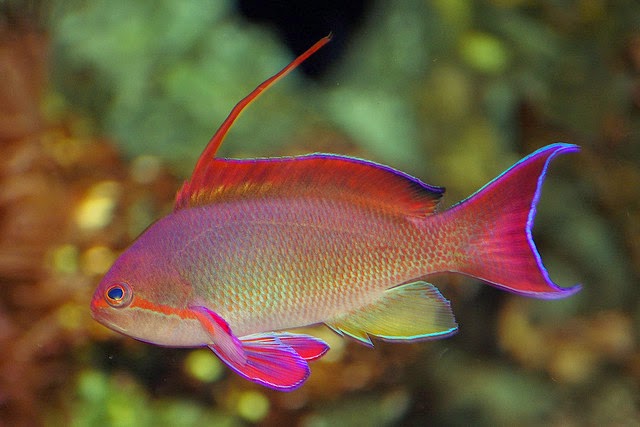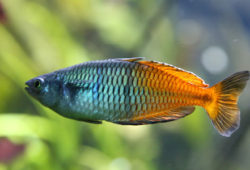Hardiest Anthias Species
The article gives you some information on Hardiest Anthias Species. While anthias have a reputation as being “expert-only” fishes, a few species are appropriate for the intermediate aquarist.

Whatever you call them—reeffish, wreckfish, jewelfish, or any of their other common names—Anthias are synonymous with many people’s idea of a tropical reef. Unfortunately, Anthias have a reputation of being somewhat difficult to keep in the aquarium. Many aquarists have heard the negative about anthias species—they are poor shippers, finicky eaters and prone to protozoan and bacterial infestations.
They need to be fed several times a day, and many prefer a continual source of planktonic food as can only be found in a large, mature aquarium. While many of these things are true, there are a few anthias species that adapt more readily to captive life and are appropriate for the intermediate hobbyists. In addition to their hardiness, they have been selected because they are some of the best shoaling anthias species.
Anthias species are hermaphroditic, meaning they can change sexes. There is often a great deal of difference in coloration between the male and female, with the male usually being flashier and, subsequently, more expensive. It is important to only keep one male per aquarium, but keeping that male with a group of females in a large reef tank makes for an incredible and very natural-looking display. If the male dies, the dominant female will become a male. While anthias can be difficult to wean onto a captive diet, many species will learn to take a variety of prepared foods, although they must be fed multiple times per day to sustain their metabolism.
Contents
Bartlett’s Anthias (Pseudanthias bartelettorum)
The Bartlett’s Anthias grows to about three and one half inches in length and can be kept in an aquarium 50 gallons or larger. Considered by many to be one of the hardiest anthias species, this fish will adapt readily to a brightly lit reef tank (most anthias species prefer a dim tank). This fish may be kept in a shoal of one male and several (up to 10 in a 150-gallon+ aquarium) females and can usually be purchased for between $40 and $50 each.
Dispar Anthias (Pseudanthias dispar)
Known as Redfin Anthias or Madder Seaperch Anthias, the Dispar Anthias reaches about three and a half to four inches in length and should be kept in an aquarium 75 gallons or larger. Like the Bartlett’s Anthias (described above), this is a shallow water species. This fish may be kept in a shoal of one male and several (up to 10 in a 150-gallon+ aquarium) females. The Dispar Anthias is commonly collected from Fiji and is usually available for between $25-$30.
Huchtii Anthias (Pseudanthias huchtii)
The Huchtii Anthias, sometimes called the Redcheek Anthias or Green Anthias, grows to a size of about five inches in the home aquarium and needs a tank of at least 50 gallons. Relatively hardy, this species may be kept in a shoal of one male and several (up to 10 in a 150-gallon+ aquarium) females. This fish is commonly collected from the Solomon Islands and can usually be obtained for between $20 and $40 each.
Lyretail Anthias (Pseudanthias squamipinnis)
The Lyretail Anthias, also known as the Scalefin Anthias or Orange Anthias, is a fish that grows to about six inches in length and prefers an aquarium of 70 gallons or larger. Undoubtedly the hardiest anthias species, it is also the most territorial. The Lyretail is the poster child for anthias species and is frequently observed in the wild and in the aquarium trade. This fish, commonly collected from Fiji, Tonga and the Red Sea, does best when kept in a shoal of at least eight females (in a 175-gallon+ aquarium).
Resplendent Anthias (Pseudanthias pulcherrimus)
This anthias seldom exceeds three inches in captivity, but does best in a 70-gallon tank or larger. Commonly collected from the Maldives, the Resplendent Anthias (also called the Tierra Anthias). This is a hardy fish with several bright color variations. Because of its size, keeping a shoal of one male and several females in a 135-gallon+ aquarium makes for a very nice display. Individuals can be obtained for between $30 and $40.



